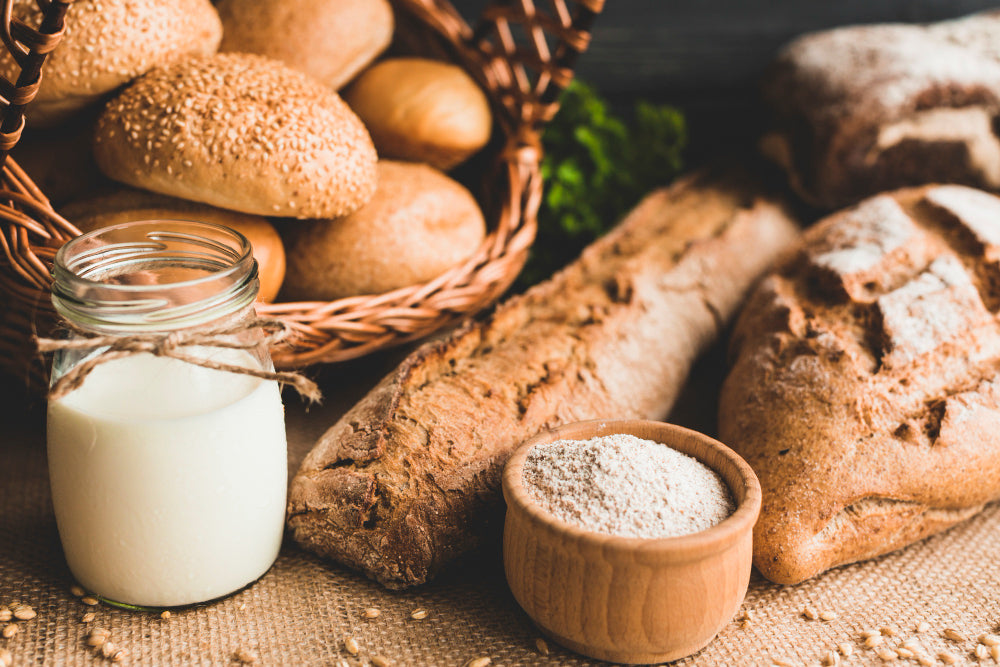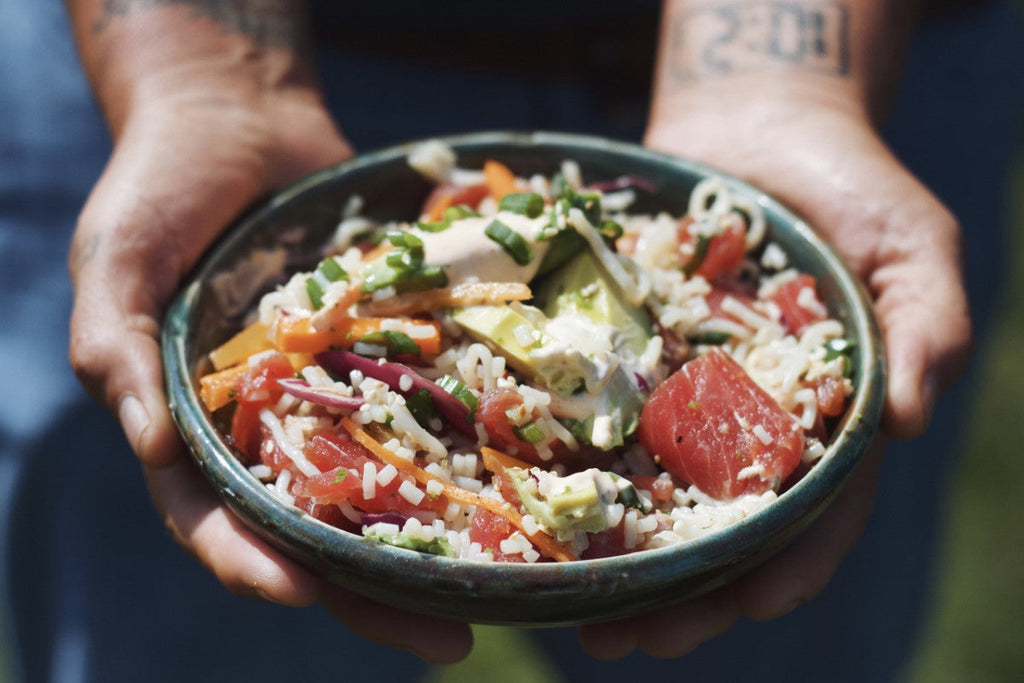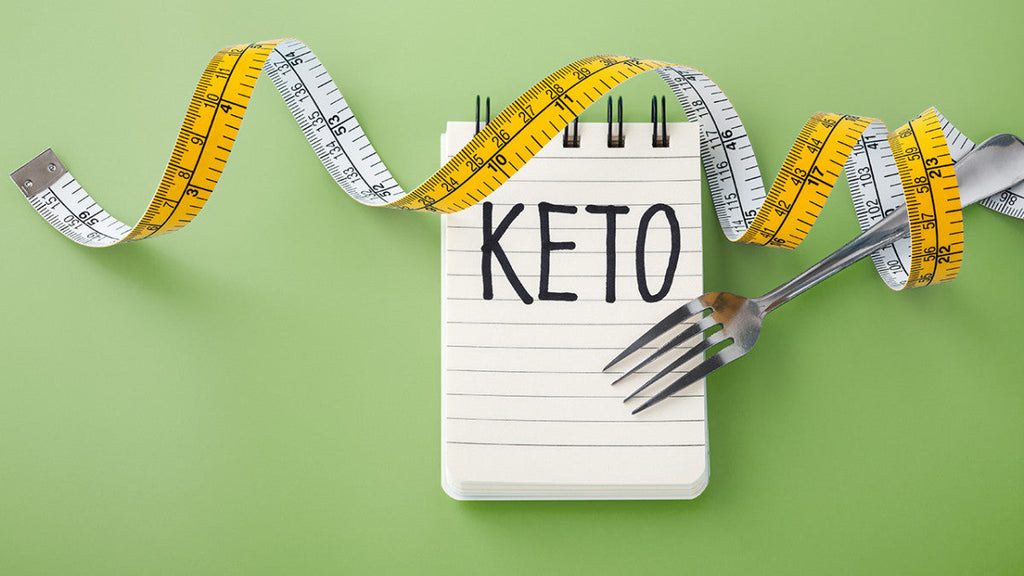How to Avoid Acid Reflux During Intermittent Fasting

Intermittent fasting is a great diet option for people who want to see results! If you’re new to the idea of Intermittent fasting or “IF,” it’s a way of eating that optimizes your metabolism and helps you cut calories. By going through periods of fasting and only eating during set hours, you’ll see weight loss results and feel great!
But for some people, getting started with IF can result in some heartburn, especially when you start eating after a fast. If you’re wondering how to avoid acid reflux during intermittent fasting, we’re here with some great ideas to help.
ALL ABOUT FASTING
Fasting has been around for thousands of years—since the time of the ancient Greeks. There are many reasons why people may fast, often mental, physical, or spiritual. People have recognized the benefits of fasting throughout the ages and the many positive effects it can have on your overall health.
So why is fasting good for people? Think of the last time you had a big meal, like Thanksgiving dinner. Chances are, you felt tired, stuffed, and even a little sick after eating. You may have had a stomachache or very low energy.
When we overeat, our body has to shift energy to our gut to process all that food. Some food, like carbohydrates, can also affect our mental clarity and energy levels. Ever heard of a carb coma? It’s that feeling you get after a big bowl of pasta—a little zoned out, a little gross.
Fasting, on the other hand, can make us feel energetic and alert. We don’t feel weighed down by indigestion and bloating. If people follow a fasting plan and wisely prepare for fasting, it doesn’t necessarily feel like deprivation or even hunger.
Now, many people might read about fasting and think, “No way! I would starve!” But with the right guidelines, a plan like intermittent fasting can help you gain more control over your eating, jump-start your metabolism, and even offer long-term health benefits.
In studies of people who fasted periodically, researchers learned that fasting could reduce inflammation in the body, keep blood sugar levels steadier, and even lead to a longer life (for real)! By helping the metabolism and countering inflammation, fasting can reduce the incidence of high blood pressure, cholesterol, and even cancer.
For many people, the immediate benefit of fasting is that it boosts your metabolism and leads to weight loss. People like intermittent fasting because they see results. Now, IF doesn’t mean starvation. Those who follow IF plans, like the Zero Hunger Fast by Jorge Cruise, rarely feel hungry between meals. That’s because they’re eating optimally for the plan and meeting their body’s needs.
Once they get used to fasting for 8-20 hours at a time, people learn when and what to eat during their meal periods. Drinking plenty of water and getting lots of protein can help dieters avoid the spike-crash pattern that can happen during typical diets.
But one thing that some new intermittent fasters notice is that they might get acid reflux or heartburn when they follow the IF plan. So, what can you do to avoid heartburn on intermittent fasting?
HOW TO AVOID ACID REFLUX DURING INTERMITTENT FASTING
If heartburn and acid reflux has been a long-term problem for you, fasting can help get your digestion back on track. However, you may notice the temporary issue of increased heartburn during intermittent fasting periods.
First of all, it helps to understand what acid reflux is. Typically, heartburn or acid reflux is caused by too much acid in the digestive tract. Acid is naturally present in the digestive system—in fact, it helps break down food. But ongoing acid buildup and too much acid in the stomach can be painful and lead to a lot of discomfort.
During fasting periods, your digestive system still churns out acid. But if your system isn’t as full, you might feel the acid rising in your stomach, moving up your esophagus, and causing heartburn.
The good news about acid reflux during intermittent fasting is that it only lasts a little while. Once your body adjusts to the fasting plan, you will likely experience even better digestion and fewer overall incidents of acid reflux. But for now, here are a few things you can do to reduce acid reflux during intermittent fasting.
1. DON’T STUFF YOURSELF DURING MEALTIMES
Intermittent fasting requires a bit of a mind game. Whether you’re following IF, keto, or a low-carb diet plan, we all know that too much restriction can lead to throwing in the towel. When people start IF, they often feel like they have to stuff themselves during their mealtimes because they worry that they’ll feel hungry during the fasting periods.
The truth is that if you pace yourself and follow the plan, you will likely feel just fine. Overeating can lead to acid reflux, indigestion, and more. So instead of trying to eat as much as possible during meals, eat regular-sized portions (or even slightly smaller portions) and really listen to your body. When you feel full, put down your fork and remind yourself that you can eat again after your fasting period is up.
2. DRINK PLENTY OF WATER
Another critical element of IF is drinking plenty of water. Many people don't realize that dehydration can actually feel similar to hunger. When we don’t drink enough water, we get stomach cramps, and we might feel dizzy, tired, or achy.
Drinking water during fasting is the key to success. Your body and stomach will feel full. You’ll avoid acid reflux and heartburn that might occur during fasting periods too. Some folks prefer to drink room-temperature water because it seems less likely to cause cramping and esophageal pain associated with acid reflux.
3. FILL UP ON NON-ACIDIC FOODS
If you’re continuing to battle acid reflux during intermittent fasting, you may also want to look at what you’re eating during your mealtimes. Filling up on acidic foods like citrus, tomato sauces, coffee, and soda during your meals can lead to acid reflux later. Instead, aim for vegetables and healthy foods like It’s Skinny Pasta.
Incidentally, some people also find that foods high in phosphorus can cause heartburn. These foods include red and processed meats, some dairy, and eggs. Some people may also experience heartburn when they eat fried foods or foods high in fat.
4. GET MOVING
One way to combat heartburn and acid reflux during intermittent fasting is to get some exercise! Moving your body can help you stay distracted from hunger and discomfort. Exercise also helps to move foods along in your digestive tract so they don’t cause indigestion.
One word to the wise, however—avoid strenuous exercise if you have acid reflux. Running and weightlifting can actually make your heartburn worse. Instead, try gentle exercises like yoga, stretching, walking, or riding a stationary bike.
5. WATCH YOUR POSTURE
When you lie down, you can experience more heartburn and acid movement in your stomach. So, if you’re experiencing heartburn during intermittent fasting, try to avoid lying flat on your back. Instead, you may want to elevate your head and upper body while you sleep or rest.
Similarly, you should watch your posture if you're experiencing discomfort. For example, acid reflux is often an anatomical issue, so if you slump in a chair, acid can seep back into your esophageal tract and cause pain. Stay upright whenever possible and avoid restrictive clothing.
6. EAT “NO BREAK-FAST” FOODS LIKE IT’S SKINNY
Finally, the BEST way to avoid acid reflux during fasting is to find healthy, non-acidic foods that fill you up and help you avoid getting heartburn and reflux in the first place. It’s Skinny is an excellent choice for intermittent fasters. In fact, some people believe it’s the secret weapon for IF success!
It’s Skinny has ZERO net carbs and only 9 calories per pack. That means you can even enjoy a serving of It's Skinny Pasta or Rice with a bit of butter and salt without breaking your fast! Sometimes eating a little something like It’s Skinny Pasta is all you need to avoid hunger pangs, acid reflux, and other effects during those first few weeks of following an IF plan.
Better still, because It’s Skinny is made with konjac root, it contains satiating glucomannan fiber. This fantastic ingredient keeps your blood sugar steady—you'll feel fuller longer and won't be tempted to cheat your way through your fast.
As for your mealtimes, It’s Skinny is the perfect base for all your favorite dishes. It’s filling, like traditional pasta and rice, but it won’t weigh you down or put you in a carb coma. Instead, you’ll feel energized, satisfied, and ready to stay on track with your diet. Explore our array of awesome It’s Skinny recipes that help you enjoy all your favorite foods the It’s Skinny way!
If you’ve struggled to stay on track (or see results) with other diets, intermittent fasting is a great option. Your metabolism will get a welcome reset, and you'll see results to help you stay motivated. The secret to IF success is It’s Skinny! Order some today to see just how easy it can be to follow an IF plan for weight loss!



















































